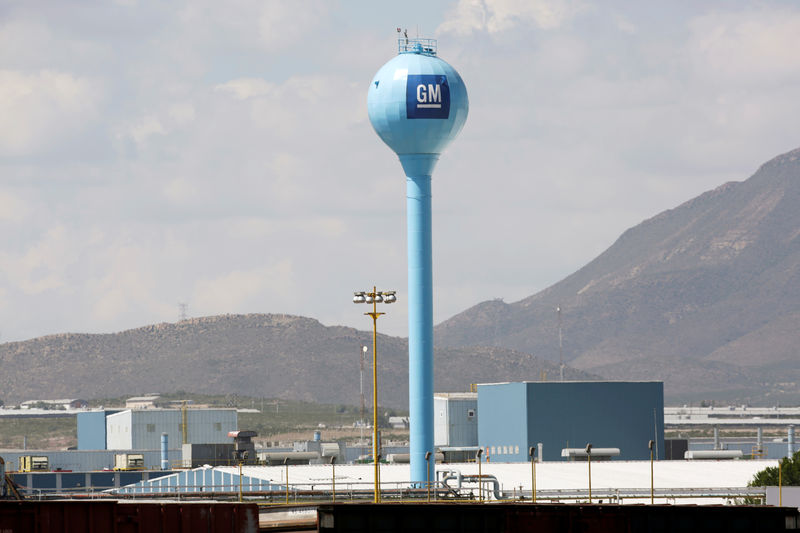By Lucia Mutikani
WASHINGTON (Reuters) - U.S. job growth likely accelerated in November as former striking workers returned to General Motors' (N:GM) payrolls, which would confirm that the economy remained on a moderate expansion path despite a prolonged manufacturing slump.
The Labor Department's closely watched monthly employment report on Friday is also expected to show steady wage gains and the unemployment rate holding near a 50-year low.
The report would validate the Federal Reserve's decision last month to cut interest rates for the third time this year, but signal a pause in the easing cycle that started in July when it reduced borrowing costs for the first time since 2008. U.S. central bank policymakers are expected highlight the economy's resilience when they meet on Dec.10-11.
Recent reports on the trade deficit, housing and orders for big-ticket goods have offered a fairly beat assessment of the economy, but trade tensions continue to loom over the longest expansion, now in its 11th year.
According to a Reuters survey of economists, nonfarm payrolls probably increased by 180,000 jobs in November, with manufacturing recouping the 36,000 positions lost in October, and bring job gains back in line with the trend for this year.
The 40-day strike by about 46,000 workers at GM plants in Michigan and Kentucky restricted employment gains to 128,000 jobs in October. Employment growth has averaged 167,000 per month this year.
"We are experiencing a Goldilocks economy, neither too hot nor too cold," said Sung Won Sohn, a business economist at Loyola Marymount University in Los Angeles. "But I continue to worry that the recession in manufacturing and poor business confidence could eventually hurt job growth and economic activity."
Manufacturing activity contracted for a fourth straight month in November. The factory malaise has been blamed on the Trump administration's 17-month trade war with China, which has bruised business confidence and undercut capital expenditure.
Though Washington and Beijing are working on a "phase one" trade deal, the United States has ratcheted up tensions with other trade partners including Brazil, Argentina and France. President Donald Trump said on Thursday the U.S. was having meetings and discussions with China "that are going well."
MODERATE GROWTH
Economic growth estimates for the fourth quarter are converging around a 1.8% annualized rate. The economy grew at a 2.1% pace in the third quarter. Economists estimate speed at which the economy can grow over a long period without igniting inflation at between 1.7% and 2%.
Employment gains in November could, however, come below expectations. The Institute for Supply Management's measure of manufacturing employment contracted in November for the fourth straight month. The ADP (NASDAQ:ADP) National Employment report showed a sharp deceleration in private payrolls growth last month and consumers' perceptions of the labor market were less upbeat.
Temperatures were cooler than normal in November, which could have impacted hiring at construction sites, mines and transportation companies. Job openings have been trending lower.
Though the labor market has been resilient despite the business investment downturn, hiring has slowed from last year's average monthly gain of 223,000 because of ebbing demand and a shortage of workers. The government has said it could cut job growth for the 12 months through March 2019 by at least 500,000 when it publishes its annual revision next February.
Still job creation is well over the roughly 100,000 jobs per month needed to keep up with growth in the working-age population. The unemployment rate is forecast unchanged at 3.6% percent. The jobless rate stalled since dropping from 4.0% in January as strong labor market conditions lured in workers from the sidelines.
The labor force participation rate, or the proportion of working-age Americans who have a job or are looking for one, is at a more than more than six-year high of 63.3%.
The tight labor market is a generating steady wage gains, which last month likely received a boost from a calendar quirk. Average hourly earnings after forecast increasing 0.3% in November after rising 0.2% in October. That would keep the annual increase in wages at 3.0% in November.
"Updates on hiring, the unemployment rate and earnings growth will provide financial market participants and policy watchers alike the latest indication of a tight labor market will continue to bolster consumer spending, and thereby support the Fed's view that monetary policy remains sufficiently accommodative," said Sam Bullard, a senior economist at Wells Fargo (NYSE:WFC) Securities in Charlotte, North Carolina.
Manufacturing employment was forecast rebounding by 38,000 jobs as GM strike returnees boosted payrolls in the auto sector. Snow storms in the Midwest and cold weather in other parts of the country likely curbed hiring in the construction industry last month after payrolls rose by 10,000 jobs in October.

Government employment likely bounced back after dropping in October as temporary workers hired for the 2020 Census departed after completing their assignments.